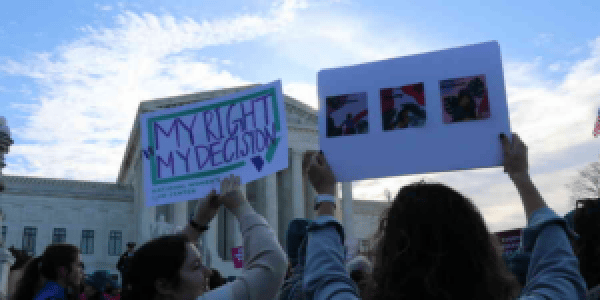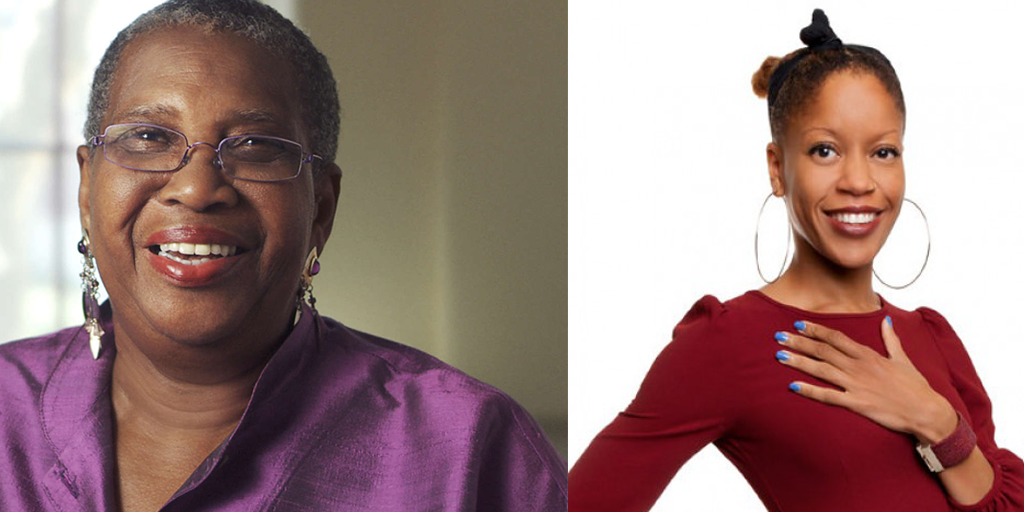Abortion rights, women of color, and LGBTQI+ people are under attack. Pledge to join us in fighting for gender justice.
#AAPIEqual Pay Day Kicks Off a Year of Looking at the Harms of the Gender Wage Gap

 Today we observe the first of many “equal pay days” in 2018, marking the ways in which women from different communities — and the families who depend on their income — are getting shortchanged by the wage gap.
Today we observe the first of many “equal pay days” in 2018, marking the ways in which women from different communities — and the families who depend on their income — are getting shortchanged by the wage gap.
First up on February 22 is Asian (or Asian American/Pacific Islander) women’s equal pay day, which represents how many extra days an Asian woman in the U.S. typically has to work into this year to earn what a white, non-Hispanic man earned last year. Here are five things you should know:
1. Asian women in the U.S. working full time, year round typically are paid only 87 cents for every dollar paid to white, non-Hispanic men. Women who identify as Asian/Pacific Islander make only 83 cents for every dollar made by white, non-Hispanic men, amounting to a loss of $10,043 a year.
2. But the 87 cent number doesn’t tell the full story, and the gap is much worse for many communities of Asian women. The wage gap number for “Asian women” collectively masks substantial disparities between several racial and/or ethnic groups of women. The Asian community in the U.S. is incredibly diverse, with many different racial and/or ethnic groups and languages, and varying educational, employment, and immigration histories and opportunities.
This diversity and complexity is reflected in different wage gaps both among different communities of Asian women, as well between men and women within a particular community. For example, Burmese women make only half of what white, non-Hispanic men make, while Indian and Taiwanese women make more than white, non-Hispanic men. But when compared to Asian men of the same subgroup, Asian women experience a gender wage gap. For instance, Indian women make just 76 cents for every dollar made by Indian men, and Taiwanese women make only 72 cents for every dollar made by Taiwanese men.
This is why data collection by the government is so important. Achieving #AAPIEqualPay means getting data that accurately reflects the diversity of identities and experiences in our country.
3. Like other women of color, Asian women experience a wage gap across education levels. Asian women experience a wage gap at every education level, and it’s widest among those with the least education. Asian women must obtain a bachelor’s degree or more before their typical wages exceed those of white, non-Hispanic men with just an associate’s degree.
4. Asian women experience a wage gap across occupations. Asian women are overrepresented in both low-wage occupations, like cashiers and retail salespeople, and highly paid occupations, like lawyers — but they still experience wage gaps in both. For instance, Asian/Pacific Islander women working as child care workers—a female-dominated, low-wage occupation—make 80 cents for every dollar paid to their white, non-Hispanic male counterparts. But Asian/Pacific Islander women who are physicians and surgeons—a male-dominated, high-wage occupation—make only 65 cents for every dollar paid to their white, non-Hispanic male counterparts.
5. Asian women lose nearly $300,000 over their lifetime, and are even worse off in some states. The wage gap for Asian women widens significantly over time. Asian women 65 and older make only 51 cents for every dollar made by white, non-Hispanic men, leaving older Asian women vulnerable to poverty as they reach retirement. An Asian woman typically loses $292,400 over the course of a 40-year career due to the wage gap. This means that Asian women have to work for 46 years to make what white, non-Hispanic men make in 40 years.
In ten states, Asian women lose more than half a million dollars over a 40-year career compared to white men. If you’re an Asian woman living in California, you stand to lose $784,520; if you’re an Asian woman living in Alaska, you stand to lose more than $1 million.
All Asian women in the U.S. deserve equal pay, no matter what their community or where they live, and need research, advocacy, and policies that acknowledge the diversity of needs that exist across communities. The “model minority” myth is a tool of erasure, used to silence people who continue to face massive obstacles in the workplace, in school, and just about everywhere else. You can make a difference by joining us today for a Twitter storm at 2 pm ET to raise our voices and demand action to achieve #AAPIEqualPay.
Mark your calendars and join us throughout the year as we highlight the ways in which the wage gap impacts all women:
April 10: Equal Pay Day (all women compared to all men)
August 7: Black Women’s Equal Pay Day
September 27: Native American Women’s Equal Pay Day
November 1: Latina Equal Pay Day





